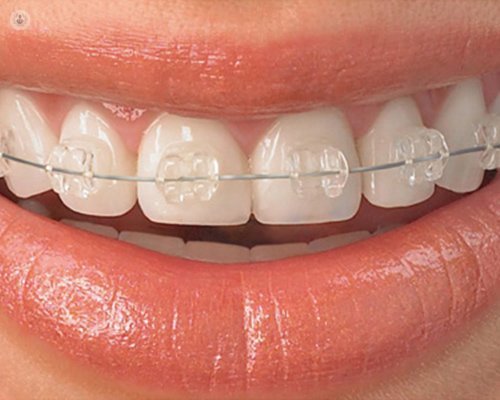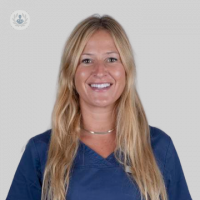All you need to know about orthodontics: when and why take
Written by: Orthodontics is responsible for correcting tooth malposition by building beautiful smiles and bringing teeth, lips and jaw bones to a harmonic situation.
Orthodontics is responsible for correcting tooth malposition by building beautiful smiles and bringing teeth, lips and jaw bones to a harmonic situation.
It is an important treatment, since the aligned teeth have a better function, they are easier to clean and, consequently, they are easier to maintain in the long term. On the other hand, if the teeth remain twisted or crowded it is more difficult to maintain a good hygiene, which can cause, in the future, caries, periodontal disease and even the loss of teeth.
In addition, there are certain aspects related to orthodontics that, if left untreated, can lead to wear or fracture of the tooth surface, poor chewing, tension in the gums and bone or malocclusion, which can lead to pain. of head and neck. Oral health is not the only benefit, a beautiful smile is also the only benefit. Orthodontics can not only improve the appearance of the teeth but also the lips and face in general. A beautiful smile improves our self-confidence and the development of interpersonal and professional relationships.
To achieve a perfect smile there are multiple solutions and methods of orthodontics, appropriate to each lifestyle and budget of the patient.
Signs indicating the need for an orthodontic examination
There are some signs that can alert us to the fact that an orthodontic examination is necessary, in order to correct them:
- Late or premature loss of milk teeth
- Difficulty eating or chewing
- Oral breathing
- Sucking your finger
- Crowding or malposition of the teeth
- Maxillae that change position, make noises or suffer protrusion or retrusion
- Difficulty speaking
- Deep bites
- Protrusion of the teeth
- Openbite
- Facial asymmetry
- Bruxism
Who should see the orthodontist
Orthodontic treatments are appropriate for both children and adults. As long as the teeth are healthy, they can be corrected. However, in children it is recommended that they see an orthodontist no later than seven years, since there are orthodontic pathologies that will be treated more easily if treated at an early age, when the jaw and maxilla are still developing.. In our dental clinic in Barcelona we do orthodontics for children and adults.
On the other hand, more and more people are aware of the importance of wearing teeth in perfect condition. The aligned teeth have repercussions from the aesthetic point of view but they also have a great functional and joint importance.
Advice when starting an orthodontic treatment
First of all, it is important to emphasize that orthodontics itself is not a painful process in time, but it can be at specific moments, when adjustments occur, in which the orthodontist exerts force and pressure on the devices located on the teeth.. However, the results can be suitable if both the patient and the orthodontist have cooperated 100% with all indications and dental hygiene.
Experts in Dentistry and Stomatology recommend:
- Ingest soft foods during the first day, in the form of puree or soup, so that they do not generate a strong impact on the teeth and, as a consequence, pain.
- Eat cooked (cooked) foods after the first day, since they are soft, they do not need to be chewed strongly and they keep their properties.
- Avoid foods that need to be bitten with the front teeth (apples or carrots), in order to avoid overexerting the teeth, in addition to preventing the fall of the bracket.
- Avoid activities that involve physical contact, such as contact sports, to minimize blows to the face.
- Use ice to relieve pain, but do not bite it, as it is not only painful but also dangerous for the device.
- Avoid acidic foods (vinegars or citrus juices) if sores appear at the beginning of treatment. Wax and some gels are good allies.
- Consult the orthodontist for analgesics.
Duration of orthodontic treatment
Orthodontic treatment can last between 12 and 30 months, depending on the route that the teeth have to travel through the alveolar bone. The total time will depend on the severity of the problem, but slight malpositions will only take a few months.
For this purpose, a preliminary analysis based on photographs, radiographs or study models must always be carried out in order to communicate to the patient the diagnosis and the best treatment option.. However, to this must be added the cooperation of the patient.
When the treatment is finished, the use of a retainer will be indicated, fixedly on the inside of the teeth, or removable (night use), to prevent the teeth from moving.
Special care during orthodontics
Orthodontic experts recommend avoiding hard foods during treatment, as they can damage the appliances and cause them to detach. Nor are certain habits recommended, such as biting your nails. If the device is damaged it will be necessary to replace the piece, with the possibility of extending the treatment.
Strict and constant dental hygiene must also be carried out, since the appliances tend to retain more food and bacteria.
For the rest, orthodontic patients can carry out a completely normal life.
Can it be late for an orthodontic treatment?
It is never too late to apply an orthodontic treatment, since the position of the teeth can be corrected at any age, with higher or lower complications that will vary according to the patient and their oral health. However, it is true that the best age to correct dental alignment is during growth.
Any patient can be a candidate for orthodontic treatment provided the teeth and gums are healthy, without decay and without inflammation. In addition, the evolution of materials and new techniques allow the patient to be treated accurately at any age.


